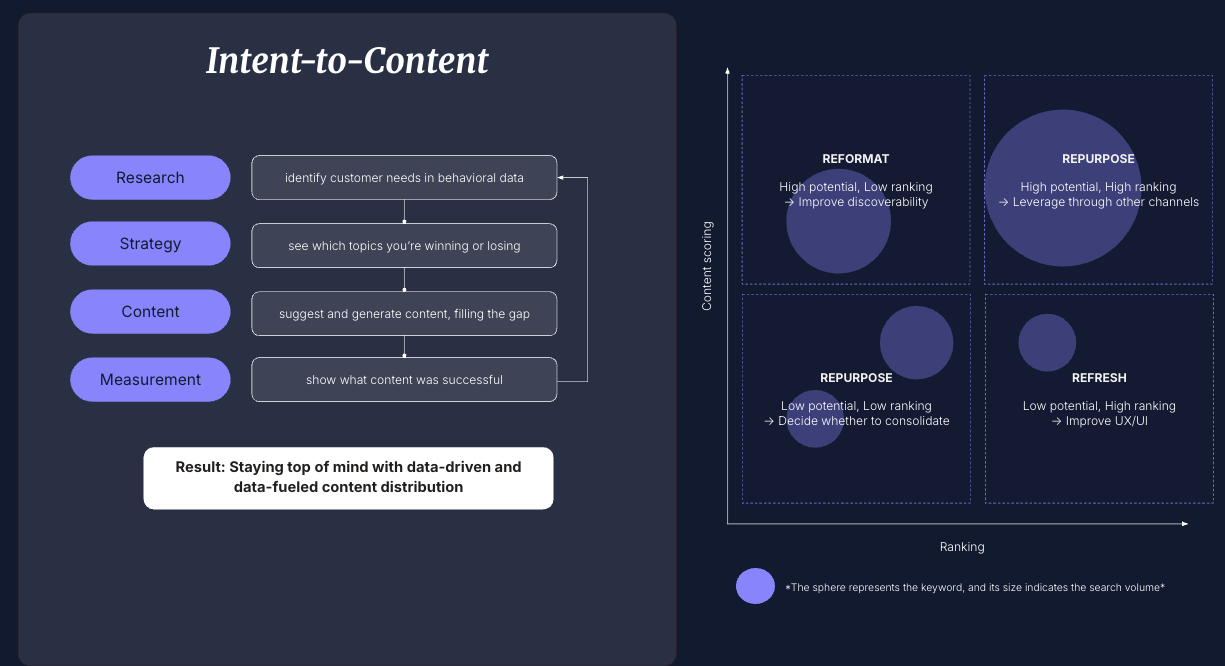From intent to content: how data shapes true brand relevance
Intent-to-content: smart moves, zero guessing
Consumers have infinite options (and zero patience for irrelevant content). So, how do you create content that lands every time? Simple. You don’t guess - you listen. Our intent-to-content approach turns user data into a feedback loop that fuels smarter content, better SEO, and stronger results.
What is intent-based content?
Intent-based content looks past keywords and focuses on why someone searches. Are they trying to solve a problem? Ready to buy? Just window-shopping online? By getting under the skin of those needs, we create content that feels like a perfect match.
We track and analyze behavior, search queries, and patterns to identify four types of intent:
- Informational: “Teach me something.” or “Help me solve this problem.”
- Navigational: “Take me to that specific page.”
- Transactional: “I’m ready to buy something now.”
- Commercial: “Help me choose what to buy in the future.”

When your content matches intent and search engine algorithms, users stick around, engage, and trust your brand. And guess what? Search engines love that too.
Why search intent Is the game-changer
Good SEO isn’t about chasing algorithms anymore. It’s about giving people exactly what they came for, increasing satisfaction and trust. Nail the user’s intent, and you’ll see better rankings, longer time on site, and higher conversions (because relevance = results).
Intent-based content also aids in developing a more targeted and effective content strategy, ensuring that content is created for the right audience at the right time.

The four phases of intent-to-content
- Research – Dive into behavioral data and figure out what your audience is truly looking for.
- Strategy – Spot opportunities and create synergy between SEO and SEA. Where are you winning? Where are you invisible? Where can we make targeted improvements?
- Create – Fill those gaps with content that answers real questions and drives action.
- Measure & Optimize – Double down on what works. Scrap what doesn’t. Repeat.
The result? Always top of mind
Intent-to-content helps you show up for your audience in the moments that matter. With data as your compass, your content stays sharp, relevant, and impossible to ignore.This not only strengthens their brand authority but also ensures they leave a lasting and positive impression.

Want to know more? Maaike Ondersteijn and Niels Witters are just a call away.